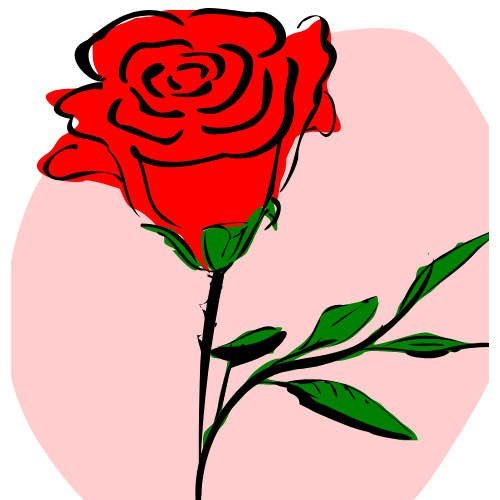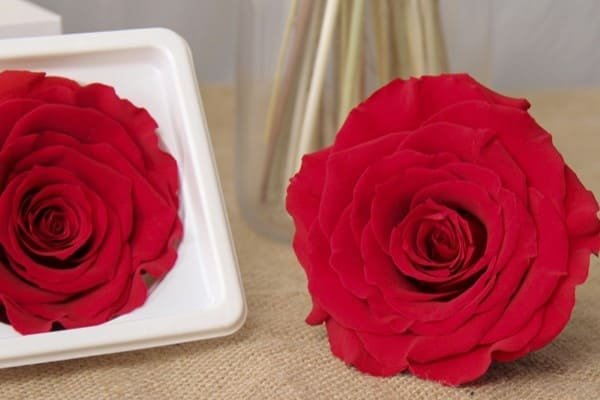


In the world of long-lasting floral arrangements, dried and preserved flowers stand out as popular options for those who want to enjoy nature’s beauty for an extended period. While both types offer longevity compared to fresh blooms, they differ significantly in appearance, texture, and care requirements. Understanding these differences can help you choose the best option for your needs, whether for home decor, events, or DIY projects. This article explores the processes, benefits, and unique qualities of dried and preserved flowers to help you make an informed decision.
Dried flowers are exactly what they sound like—flowers that have been naturally or artificially dehydrated. This process involves removing the moisture from fresh flowers, leaving behind a more delicate, paper-like version of the original bloom. Common methods for drying flowers include air-drying, pressing, and using desiccants (substances that absorb moisture).
Dried flowers are beloved for their rustic, vintage appearance. Over time, they take on a more muted color palette, fading slightly but retaining their unique charm. Popular dried flowers include lavender, roses, baby’s breath, and hydrangeas.
Preserved flowers, on the other hand, undergo a more complex process that involves treating fresh blooms with a special solution that replaces the natural sap and moisture in the flower. This method halts the natural aging process, allowing the flowers to maintain their softness, color, and pliability for months or even years. The preservation process ensures that the flowers retain their fresh appearance without wilting or drying out.
Preserved flowers maintain the appearance of fresh blooms but require little to no maintenance, making them a popular choice for luxury floral arrangements, wedding bouquets, and home decor.

While both dried and preserved flowers offer long-lasting beauty, their distinct characteristics make them suited to different applications. Below are the key differences between the two:
Dried flowers have a wide range of uses, particularly in decor and crafting. Their delicate, natural look makes them perfect for creating rustic, bohemian, or vintage-inspired designs.
Dried flowers are commonly used in home decor, particularly in settings that emphasize a natural or minimalist aesthetic. They can be arranged in vases, used in wreaths, or hung as wall decorations. Their subtle colors and earthy textures complement a wide range of interior design styles, from country farmhouse to modern boho.
Dried flowers are increasingly popular in wedding bouquets, boutonnieres, and table centerpieces. Their natural, timeless look works well for outdoor, garden, or barn weddings. Additionally, dried flowers can be kept as keepsakes after the event, making them a sentimental choice.
Dried flowers are a favorite for DIY craft projects, including making floral crowns, jewelry, and candles. Their fragile nature adds a delicate touch to homemade gifts and decor items.
Preserved flowers, with their vibrant colors and long-lasting nature, are often used in luxury decor and high-end floral arrangements.
Preserved flowers are a popular choice for creating luxury floral arrangements that mimic the look of fresh flowers. Their softness and vibrancy make them ideal for sophisticated designs, such as wedding bouquets or corporate event centerpieces.
Because preserved flowers maintain their appearance for years, they are a popular choice for creating everlasting floral gifts. These gifts can include boxed roses, floral domes, or personalized arrangements that serve as long-lasting reminders of special occasions.
In home decor, preserved flowers are often used in modern, minimalist, or luxurious settings. They can be arranged in vases, incorporated into wall art, or displayed in glass cloches for an elegant, sophisticated look.

When deciding between dried and preserved flowers, consider the following factors:
If you prefer a natural, rustic look with muted tones and a more fragile texture, dried flowers are the better choice. On the other hand, if you want a vibrant, fresh appearance that mimics fresh blooms, preserved flowers will better suit your style.
Dried flowers are generally more affordable, making them a great option for budget-conscious decorators and DIY enthusiasts. However, if you’re willing to invest in longer-lasting, higher-quality blooms, preserved flowers offer excellent value for their longevity and appearance.
For crafting, DIY projects, and casual home decor, dried flowers may be ideal due to their availability and ease of use. For luxury events, special gifts, or high-end decor, preserved flowers offer a more polished, long-lasting alternative.
Both dried and preserved flowers have their unique charm and advantages, making them versatile options for a variety of uses. Dried flowers offer a rustic, vintage appeal with their delicate texture and faded hues, perfect for crafts and informal decor. Preserved flowers, with their fresh appearance and vibrant colors, are ideal for luxury arrangements and long-lasting floral displays. By understanding the key differences between the two, you can select the best option for your needs and enjoy the timeless beauty that both dried and preserved flowers bring to any space.